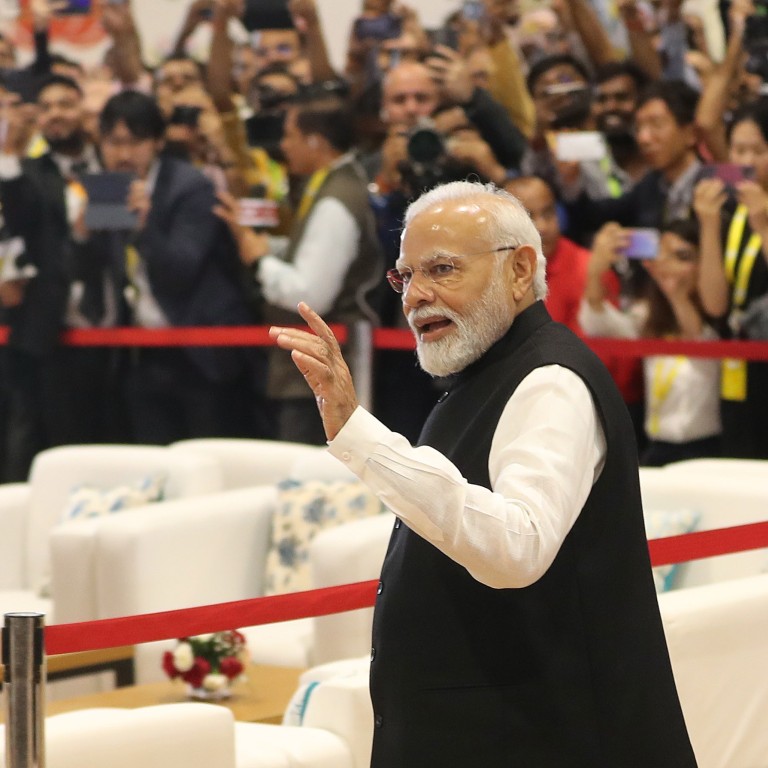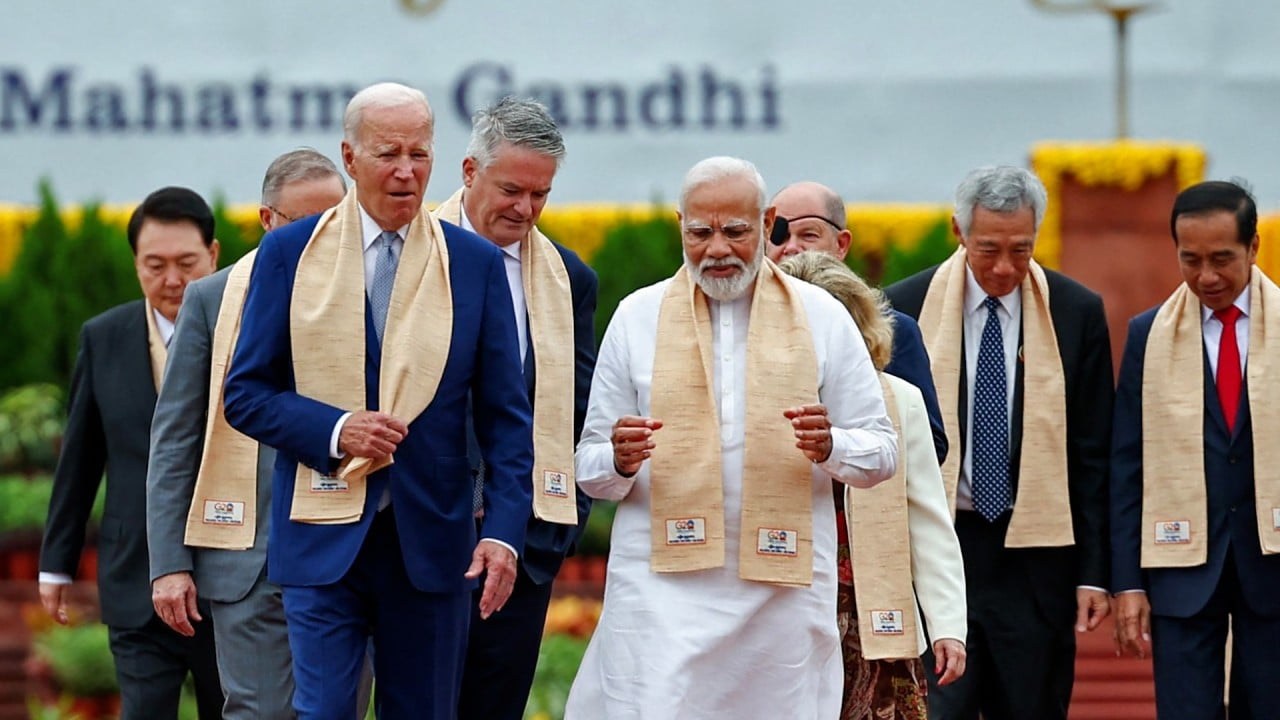
Why India’s G20 triumph means much more than the tangible results
- New Delhi is framing the summit as the country’s coming-out party, capping a year of milestones and on a par with the Beijing 2008 Olympics
- India has hit a geopolitical sweet spot, and is in a stronger position today than it was the last time it had a prominent international role, under Nehru
India’s G20 presidency brought India to the world, but it also brought the world to India as it served to invigorate public debate on global issues while simultaneously highlighting the growing importance of India to the world. This will undoubtedly be another feather in the cap of Prime Minister Narendra Modi ahead of next year’s general election (which could partially explain New Delhi’s decision to delay assuming its G20 presidency by a year by swapping with the intended 2023 host, Indonesia).
The Modi government has referred to India as “vishwa guru” – a teacher of the world offering Indian solutions to issues of global governance ranging from climate change to digital public infrastructure and global health. India’s commitment to globalisation – albeit a more equitable model of globalisation – also contrasts with the more insular world view that has taken hold in the West in recent years.
However, this symbolic triumph is a double-edged sword. India’s G20 presidency also reflected the challenges of navigating a climate of growing geopolitical polarisation amid the Russian invasion of Ukraine and widening fissures in the US-China relationship.
The absence of the Chinese and Russian presidents from the summit proceedings, for example, gave the lie to the theme of India’s G20 presidency, “Vasudhaiva Kutumbakam” (“One Earth, One Family, One Future”). These fissures will make it harder to reach consensus on issues of global governance including pandemic response and climate change.
Of course, this does not take away from India’s achievements. New Delhi is framing India’s G20 presidency as the country’s coming-out party, on a par with China’s 2008 Olympics.
India is also a potential beneficiary of the push to de-risk supply chains from China, particularly in areas involving critical and emerging technologies.

However, India’s rise is not inevitable. The last time India sought to play such a prominent role in global leadership was during the tenure of India’s first prime minister, Jawaharlal Nehru. During this period, India projected itself as a voice of what was then referred to as the Third World.
It was architect of the Non-Aligned Movement and also played an important mediatory role during various conflicts, including the Korean war. However, this phase of Indian internationalism came to an abrupt halt when geopolitical developments and domestic politics derailed India’s global ambitions.
India is of course in a much stronger position today. It is expected to surpass Germany and Japan as the world’s third largest economy by the end of this decade. It now maintains a world-class military, unlike in 1962, when it suffered a humiliating defeat to China in their brief border war.
While the Indian policy of non-alignment forced it to choose between the US and Soviet Union during the Cold War, today the Indian government maintains good relations with both the United States and Russia and all major poles of influence in the international system today (with the notable exception of China).
However, India’s ability to leverage and retain this geopolitical sweet spot will be dictated by its ability to navigate a challenging global geopolitical environment and a divisive domestic political climate.
Chietigj Bajpaee is a senior fellow for South Asia at Chatham House, a London-based public policy think-tank


